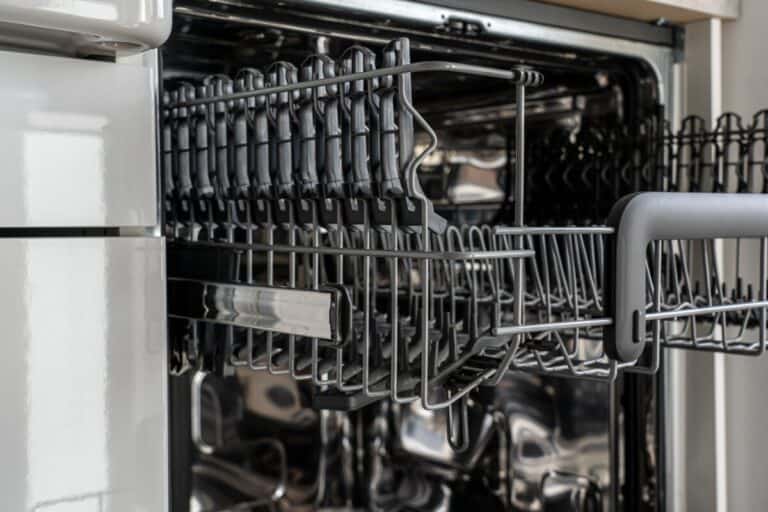How Often Do Saxophone Pads Need to be Replaced?
Saxophone pad care and pad replacement may not be the most interesting topics where saxophones are concerned, but they are worth understanding. Pads are expensive, so it is important to know how to take care of them and only replace them when necessary.
Saxophone pads need to be replaced when they become so worn that they leak. With proper saxophone care, this can be less than once every ten years. The life of saxophone pads can be extended by thoroughly swabbing out your instrument each time you practice and properly cleaning sticky pads.
Not all leaks are due to worn pads, though, so don’t be so quick to get them replaced if you’ve noticed a leak! We’re going to discuss how exactly to know when you should replace your pads, as well as all the pad-care tips you’ll ever need.
How do you know when to repad your saxophone?
You should repad a key if:
- The pad is leaking,
- The pad is worn, and
- The cause of the leak is the worn pad.
My personal recommendation is to get a pad replaced if and only if all three of these things are true. If it is worn, but not leaking, then don’t replace it. If it is leaking, but not worn, then the leak most likely has some other cause. I would take the saxophone to a repair person to get it checked out, but don’t assume that the pad needs replacing if the pad doesn’t have visible wear and tear.
If the pad is both worn and leaking, then you should take the pad to a trusted repair person (preferably one who specializes in the saxophone) and ask them whether you should get the pad replaced. If they determine that the cause is indeed the worn pad, then you should get that specific pad replaced.
In general, you should never get a pad replacement unless you absolutely have to. It’s an expensive repair, and it is one which takes a lot of skill to do properly. In an ideal world where you take perfect care of your pads, you should basically never have to get them replaced.
That being said, it may be worthwhile to get all the pads replaced if one needs replacement and the others are almost at that point as well. It is generally cheaper to replace pads in bulk. Again, however, you should never go through this process at all unless you absolutely have to.
Let’s go back to our three criteria above. It is easy to tell whether a pad is worn – you’ll be able to see the torn felt. It is less straightforward to tell whether a pad is leaking, though, so let’s take a moment to discuss that.
How do you know if your saxophone is leaking?
You can tell that your saxophone is leaking if you struggle to play low notes at a soft volume. This will likely be accompanied by resistance when you try to play, as well as possibly squeaks. You can check for leaks with a saxophone leak light.
If you are trying to play on a leaky saxophone, you will most likely find that it suddenly becomes much harder to play notes that require the leaky key to be closed. Leaks are sometimes (but not always) due to a damaged pad. They can also be caused by a variety of other factors, such as a misadjusted screw or a bent key.
While using a leak light is the most surefire way to check for a leak, there is one other method you can use to try to pinpoint the leak:
- Slur downward chromatically from high F#.
- Notice at what point you begin to feel resistance. The last key that you put down at this point most likely has a leak.
While you will still need to get your saxophone checked for leaks with a leak light (most likely by visiting a repair person), this is a nice do-it-yourself method for pinpointing the leak. If you manage to pinpoint the leak to a pad that’s looking quite worn out, you most likely need to replace the pad.
Of course, in an ideal world you would want your pads to never get worn out and never leak. So, it is worthwhile to learn how to make your pads last longer.
How to make your pads last longer
The easiest way to make your pads last as long as possible is to do a thorough job of swabbing out your saxophone and to promptly use cleaning paper on sticky pads. Additionally, making sure that keys stay open while they dry out will prevent moisture buildup and extend the life of the pads.
Pad care isn’t too complicated, but you do nonetheless need to make sure that you commit to doing it. The first step is to swab out your instrument after every time that you play. You should do this with a cloth attached to a string with a weight – this allows you to pull the cloth through the entire instrument.
Don’t skip out on this! You are constantly blowing moisture into your instrument as you play, and that moisture can build up close to the pads and wear them out. Moisture and pads do not mix well. In fact, I recommend running the swab through your saxophone multiple times after each playing session if you can. This is just to ensure that you get as much moisture out as possible.
Also, it is probably best to store your saxophone with all the keys open. The palm keys, the G# key, E-flat key, low C# key, and several of the side keys are normally closed by default. Consequently, these are often the first pads to get worn out. The reason for this is that the moisture builds up right next to the pads, causing them to erode much more rapidly than the other keys.
You can get a device to keep the keys open while your saxophone dries out. This will cover your E-flat, G#, and C# keys, which are the most prone to getting damaged.
Finally, make sure that you promptly clean any pads that are starting to get sticky. Speaking of which…
How to clean a sticky pad
- Place pad cleaning paper underneath the sticky pad.
- Close the key on top of the paper.
- Gently pull the paper out from under the pad while the key is closed.
- Repeat until the pad no longer sticks.
The only thing you’ll need for this is pad cleaning paper. However, you can do the same process with powder paper to ensure that the pad does not stick in the future.
Replacing saxophone pads
This is a process best left to a skilled repair person. You can do it yourself if you develop the necessary knowledge and skills to do so, but I don’t recommend you try to unless you are really interested in instrument repair.
I’ll be honest: I’m not confident in my ability to replace a pad. It isn’t an easy thing to do well, and it involves disassembling and reassembling part of the saxophone. A mistake here could leave the saxophone unplayable.
My personal recommendation is to find a repair person who specializes in the saxophone. If you really want to do it yourself, I think this article explains it quite well. This is not something to attempt for the faint of heart, though!
Conclusion
The bottom line is that you probably don’t want to replace your pads unless you absolutely have to, and that you should replace them as seldom as possible. If your pads absolutely need replacing, get that done. Otherwise, focus on maintaining your pads so that they hopefully never need replacement.






